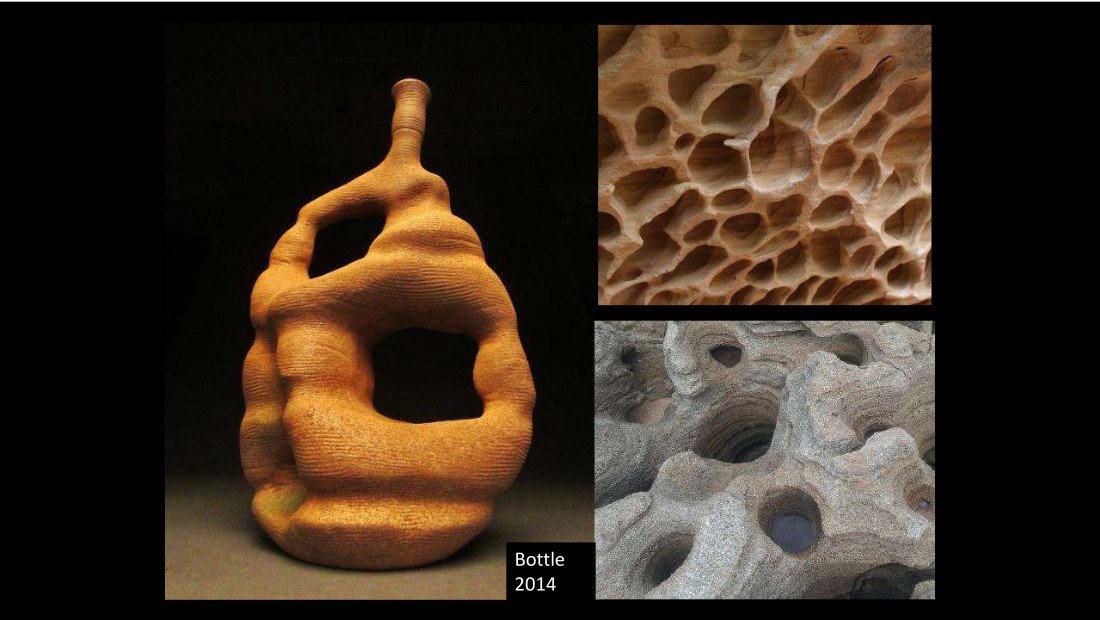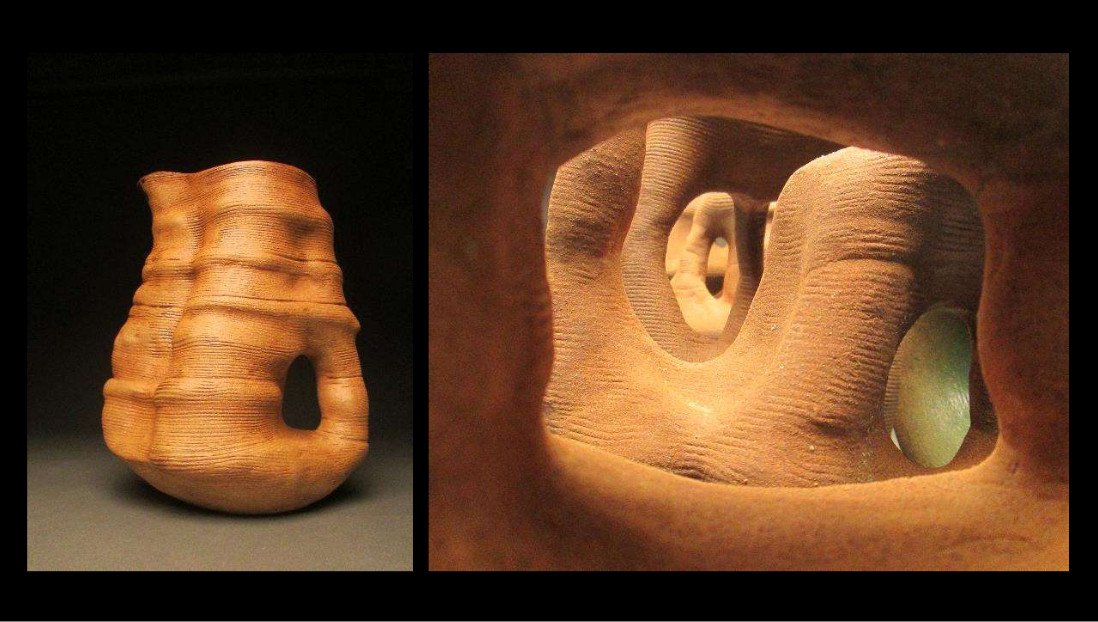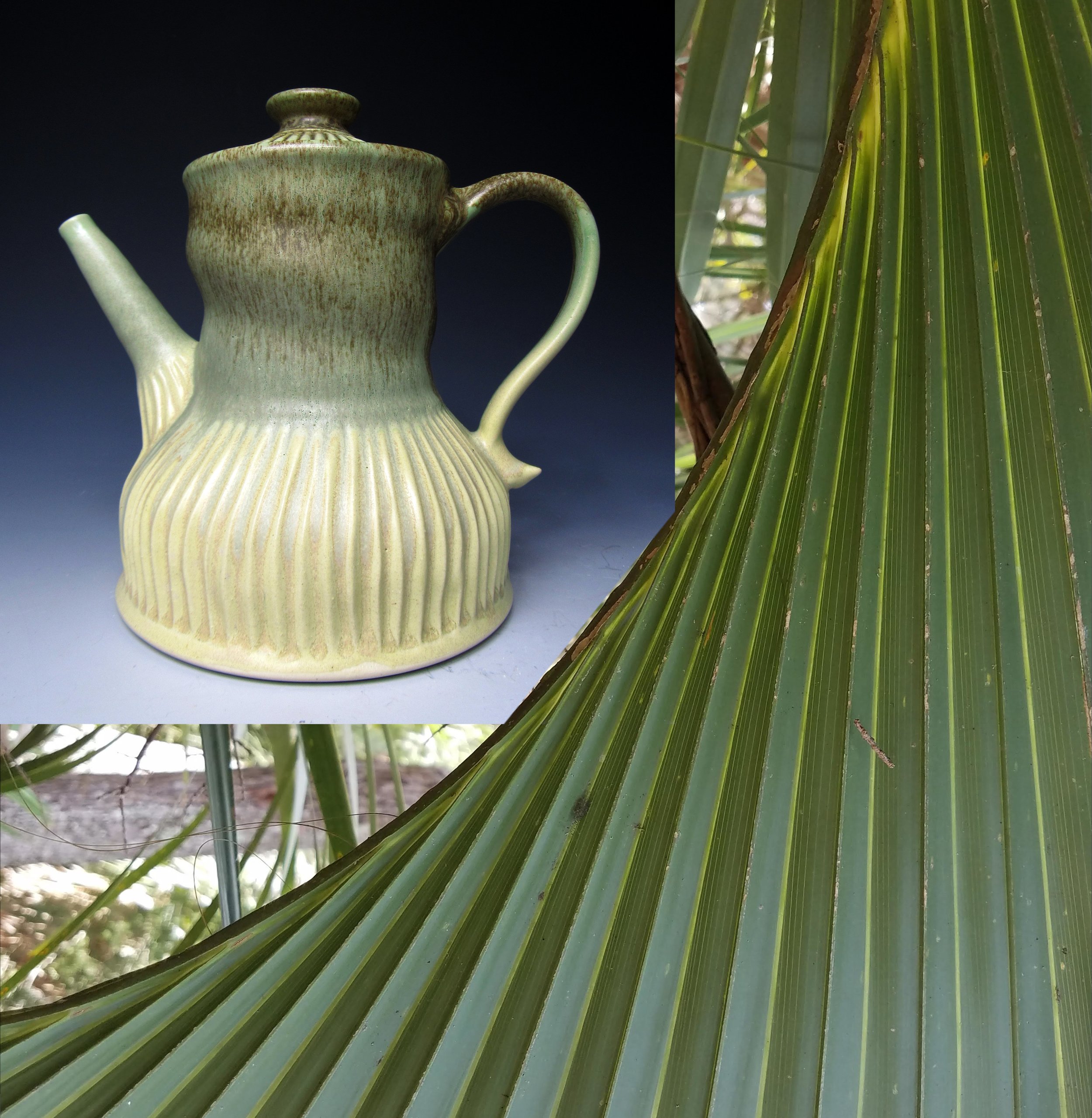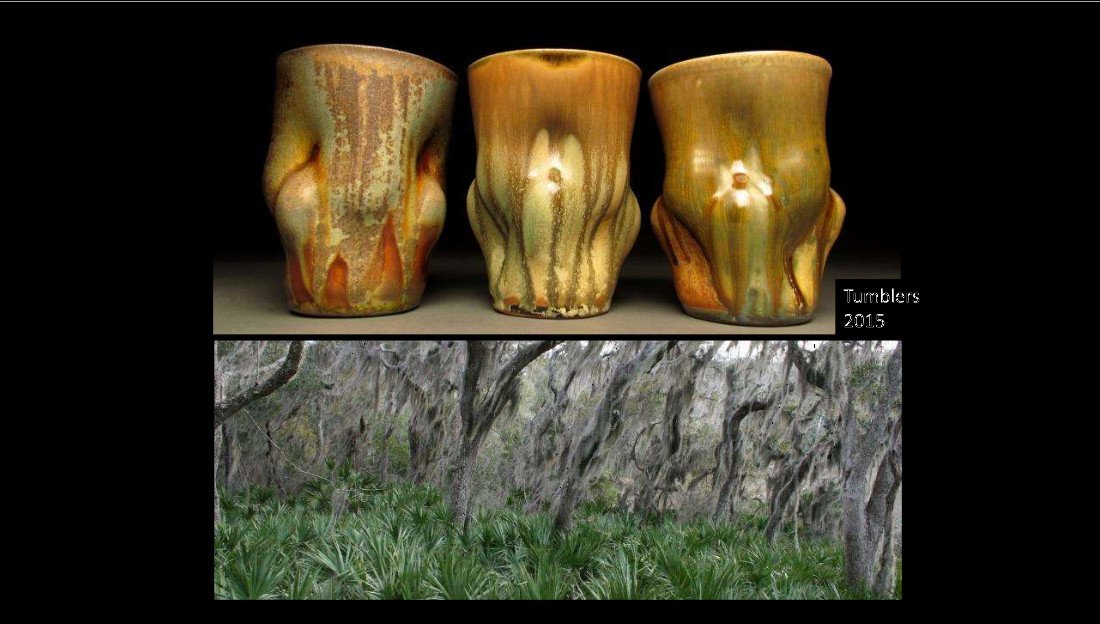Local Influence
The natural beauty of the estuarine and hammock environment of the North East Florida coast deeply impacted me at an early age. Especially beautiful are the delicate plants, mosses, and fungi which showcase the great diversity of shapes and colors that are inherent to the flourishing of these elegant flora. The gentle and earthy color palette of the swamp merging with the forest floor is at once rich and full of life as well as hushed and sedate. Capturing the intrinsic beauty of color and form found in the sandy hammock environments just upland of the salty estuaries, the quiet forms are organic and allow for a diversity of surface treatments that bless the piece with anonymity of process and eternal variation.
Local Clay
Roadside ditch showing clay at the water line. FL
Hillside strata where I harvested clay in grad school. KS
FInding The source
Upon my return to Florida, after grad school, I began the hunt for a source of local clays excited by my success in Kansas. There is much less topographical variation in my part of Florida and road-cuts through hills do not exist because we lack hills... Therefore, I began by asking community members from my childhood and eventually called every dirt/excavation company in the county. During my research I also came across several old publications by the University of Florida on the economic suitability of soil resources for each county in the state. This publication mentioned several clay deposits in my area but the suitability was limited to “unvitrified brick” A final source of information was a series of calls with city and county historical societies where I heard stories of abandoned brick factories.
All of this information intrigued me but none of the dirt companies had open pits with clay and none of the other stories were attached to identifiable locations. After chatting with my Dad who has experience with GIS mapping I checked out the USDA National Resource Conservation Service (NRCS) Web Soil Survey website. Armed with this online search tool and anecdotal directions I was able to narrow my search and make some more phone calls.
Eventually, after receiving permission to check some ditches in a rural community, I took my boots and shovel and began the prospecting phase of the search. Finally, after months of homework I found clay!
It turns out that while the clays in Kansas may have been secondary, the coastal Florida clays are very sandy worked through with roots and limestone concretions. During my conversations, I learned the vernacular term for this clay is “gumbo” and there are two explanations for this. Ether because the mottled grey/blue/yellow colors of the clay in the ground resemble gumbo (the food) or because it “gums” up the excavators. Essentially, it is a sticky-sandy ball clay full of organics and fires to a very loose, unvitrified matrix after the organics burn out. Even at cone 12, in the front of an anagama, a raw clay vessel will remain porous if there was not the thickest of ash accumulations






